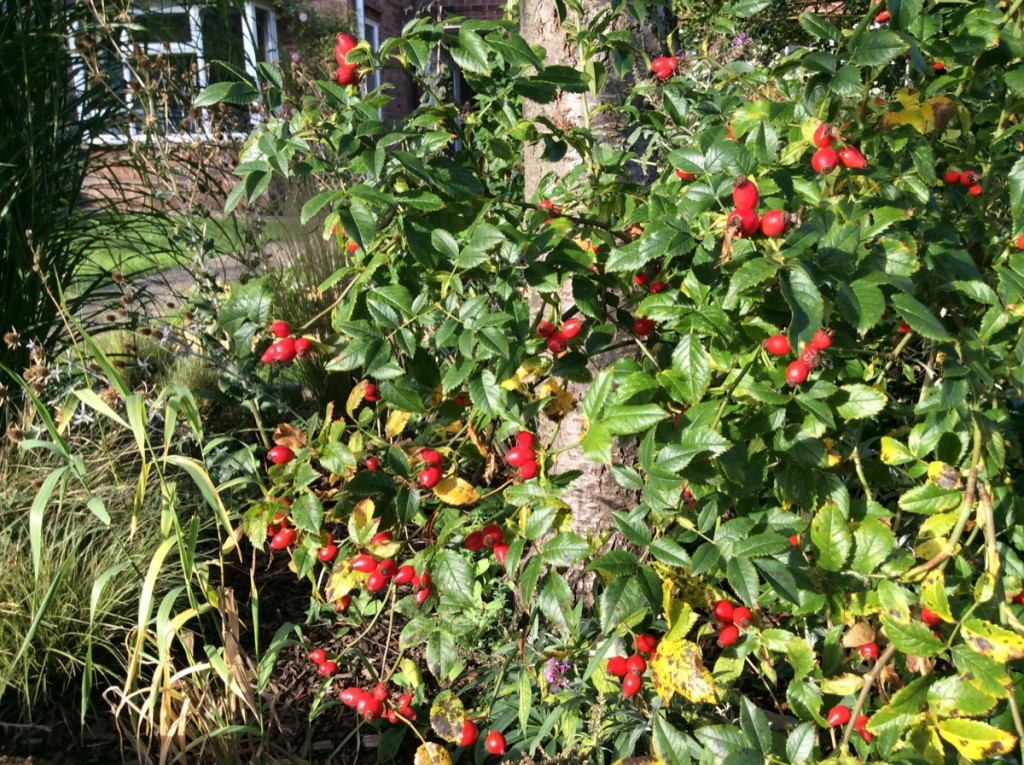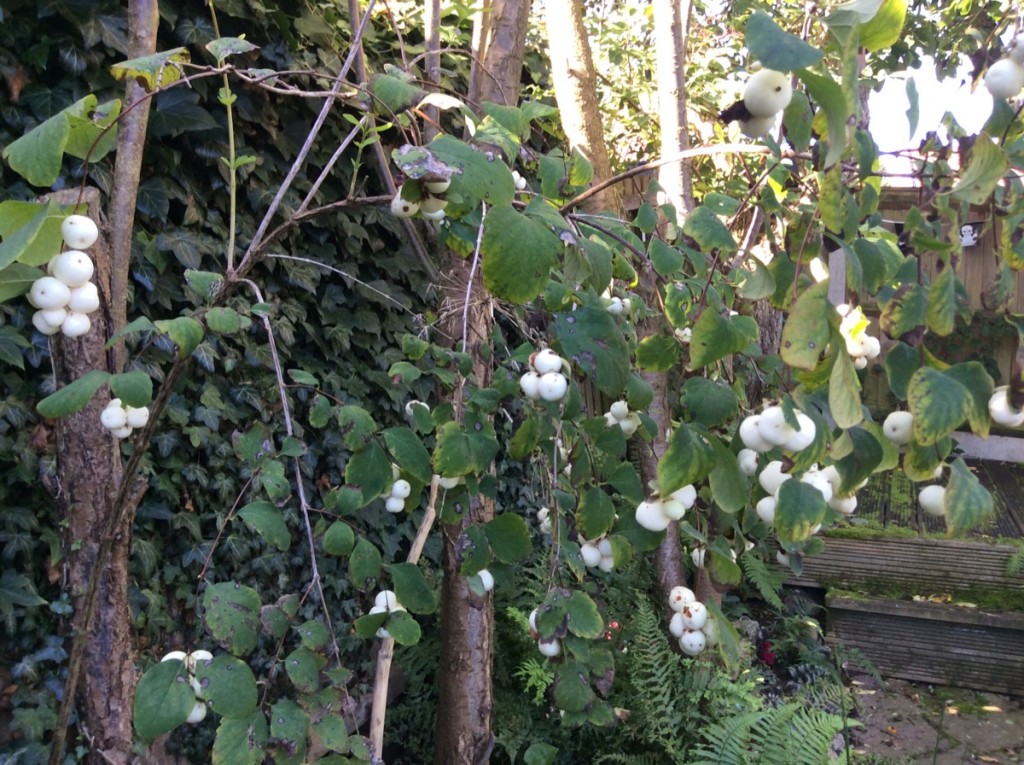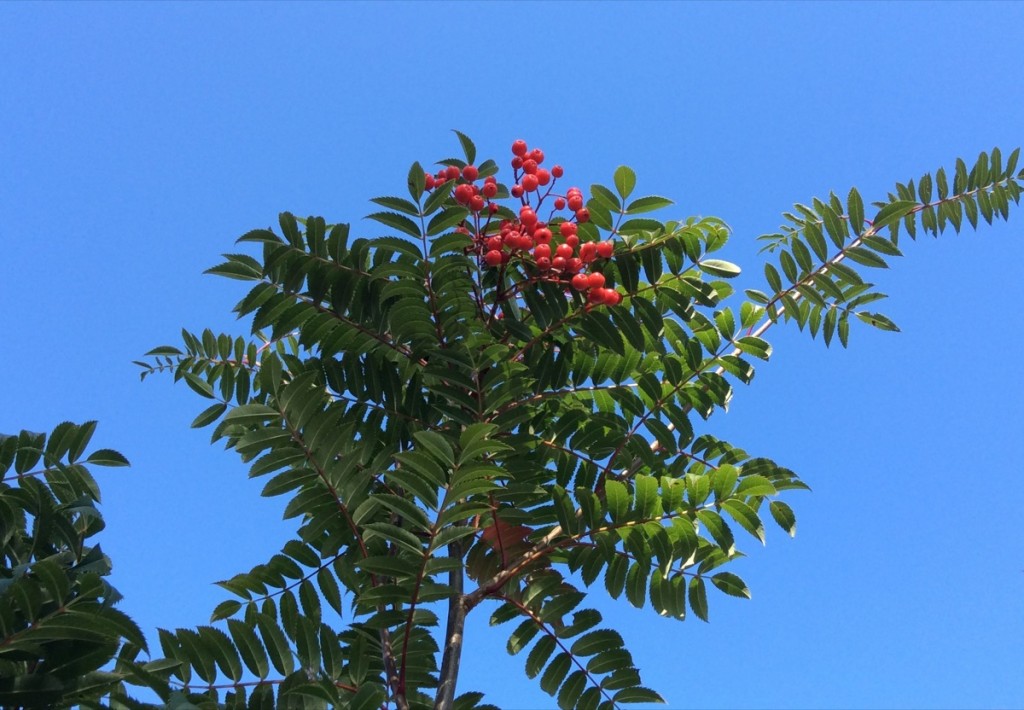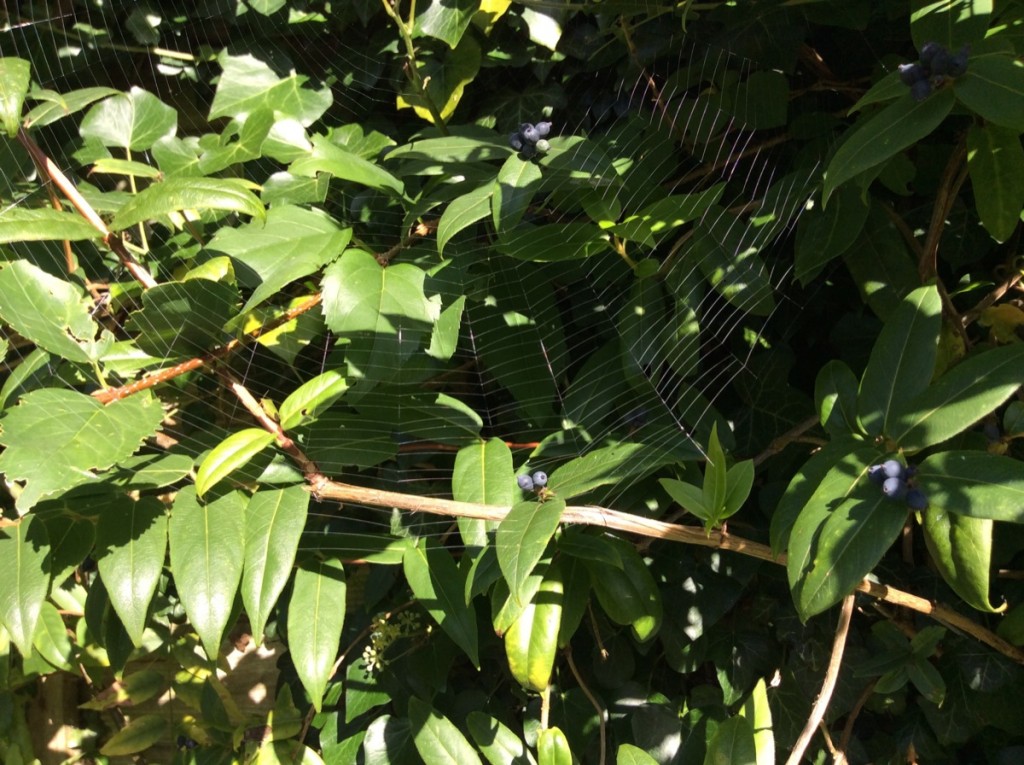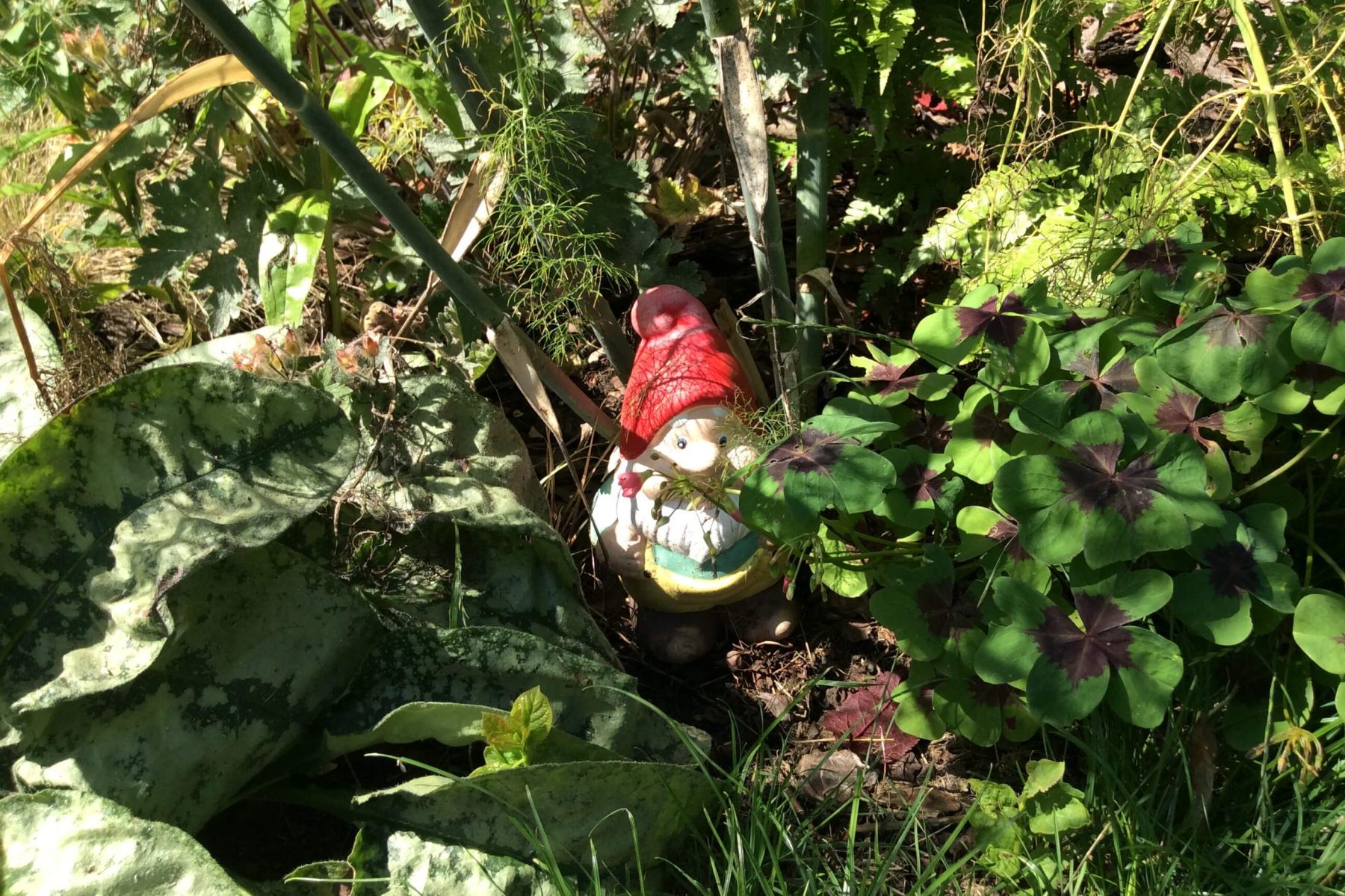
The garden is looking quite gorgeous this week. The low autumn sunshine acts like a spotlight and the early morning dew is making the whole place shine. There are spider webs everywhere. The late flowers of roses, sedums, cyclamen, heleniums and asters are lovely. But as I walked around the garden this morning, it was the fruit and berries that stood out. I was reminded of the first line of a poem.*
“Season of mists and mellow fruitfulness,
Close bosom-friend of the maturing sun;
Conspiring with him how to load and bless
With fruit the vines that round the thatch-eaves run”
Sadly, we have no thatched eaves. But we do have fat dusky pink crab apples, creamy white snowberries, big orange and red rosehips, dark purple honeysuckle berries, rowan berries the colour of burnt umber, tiny red haws on the hawthorn tree, juicy blackberries, and shiny elderberries. Soon there will be berries on the ivy. And in my neighbours’ gardens, thorny pyracantha are covered in dense clusters of red or orange berries with black star centres. Berries are the essence of autumn, and many will last until late winter.
It’s definitely worth thinking about berries when you are planning any new planting. They provide colour and a feeling of fecundity late in the year, when much of the rest of the garden is dying back. Some plants are really generous and will give you pretty flowers, gorgeous foliage, autumn leaf colour and berries. Try these shrubs: Sambucus Nigra (Black Elder) or Viburnum x hillieri ‘Winton’. And if you want a tree suitable for a small to medium-sized garden, go for Sorbus Commixta, the Japanese rowan or mountain ash (as recommended in this month’s Gardener’s World magazine).
Do bear in mind that many berries are poisonous, including yew, snowberries, ivy, holly and mistletoe. Some toxins can even be absorbed through the skin. I try to often remind my children that they should never pick or eat any berries (or indeed anything from the garden), without first checking with a grown-up, even if they remember eating berries from that plant before. It’s so easy to get muddled up when plants are growing together, or when borders have matured or changed.
*I actually only remembered the first line and couldn’t remember who the poem was by, but I looked it up. It’s ‘To Autumn’ by Keats, written in 1819, and it’s rather beautiful.
‘To Autumn’ by John Keats
Season of mists and mellow fruitfulness,
Close bosom-friend of the maturing sun;
Conspiring with him how to load and bless
With fruit the vines that round the thatch-eaves run;
To bend with apples the moss’d cottage-trees,
And fill all fruit with ripeness to the core;
To swell the gourd, and plump the hazel shells
With a sweet kernel; to set budding more,
And still more, later flowers for the bees,
Until they think warm days will never cease,
For Summer has o’er-brimm’d their clammy cells.Who hath not seen thee oft amid thy store?
Sometimes whoever seeks abroad may find
Thee sitting careless on a granary floor,
Thy hair soft-lifted by the winnowing wind;
Or on a half-reap’d furrow sound asleep,
Drows’d with the fume of poppies, while thy hook
Spares the next swath and all its twinéd flowers:
And sometimes like a gleaner thou dost keep
Steady thy laden head across a brook;
Or by a cyder-press, with patient look,
Thou watchest the last oozings hours by hours.Where are the songs of Spring? Ay, where are they?
Think not of them, thou hast thy music too,—
While barréd clouds bloom the soft-dying day,
And touch the stubble-plains with rosy hue;
Then in a wailful choir the small gnats mourn
Among the river sallows, borne aloft
Or sinking as the light wind lives or dies;
And full-grown lambs loud bleat from hilly bourn;
Hedge-crickets sing; and now with treble soft
The red-breast whistles from a garden-croft;
And gathering swallows twitter in the skies.
